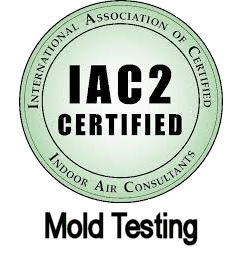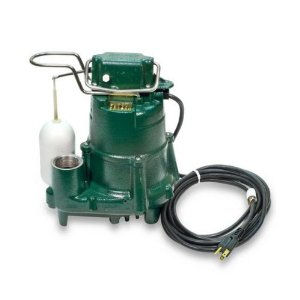"This mold organism emits toxins as a byproduct that can even be unhealthy to the point of death..."
|

Contact Uss
We Guarantee Results! |
Mold cannot derive its water needs from mere water vapor. Liquid moisture, as opposed to moisture vapor is liquid water. Undisturbed water within a home will foster mold growth since the spores are present and there is always a source of food for the mold organism. It is easy to see the moisture in the basement of many affected homes as it seeps into the walls and up from the floors. Hydrostatic pressure on the foundation walls and floor pushes water into the basement. The original excavation for the foundation of the home disturbed the natural veins in the earth that carry ground water. Possibly a simple gutter problem is causing roof run-off to be channeled against the foundation, washing away not only the ground around the home, but possibly undermining the very foundation of the home. Basement water is dangerous on several fronts. First, you should verify the cause of the water entering the basement. Basement waterproofing companies will often sell basement waterproofing without checking the cause of the water infiltration. The roof, gutters and drainage need to be checked before a basement waterproofing job is recommended. This is because an over abundance of periodic concentrated water from the roof can undermine the foundation. With the washing affect from new basement waterproofing, the earth below the foundation which was considered “Terra-firma,“ becomes a transitional base that withers away. The resultant cracking of the foundation walls and footings makes for serious and expensive damage repairs. After source diagnosis and proper addressing of the root cause of the water, basement waterproofing will usually afford relief from the moisture and the mold. Killing the mold is only part of the solution, because the mold will return if the water is not evacuated on a continuing basis. Successful basement waterproofing will offer a dry environment where mold cannot flourish.
"Basement waterproofing companies will often sell basement waterproofing without checking the cause..." |
 |
Liquid moisture within the attic is often a confusing concept as it is often incorrectly associated with a leak in the roof. Liquid moisture often results from condensation in the attic. Often in the winter months, warm moisture laden air is pushed by the heating system into the attic through bypasses, or right through the ceiling itself. In the attic water vapor condenses on the back side of the roof deck, roof nails frost and a mist can form that “rains” down onto the attic floor. This phenomena is similar to a cold drink forming moisture on the outside of a glass in the summer, or your breath condensing onto the windshield of an automobile in the winter. This condensation is liquid moisture and mold thrives on the water as the mold has all the food it can digest readily available. Wood or cellulose or any organic material in the attic will feed the mold once it has the moisture. The moist and matted attic insulation becomes useless, thereby contributing further to the warm attic syndrome while the mold flourishes..

"Finding the indoor relative humidity is the first course of action..." |
 |
Attic ventilation is often misunderstood by most in the construction trades and even many architects lack the knowledge of proper ventilation practices. (This website has many pages devoted to proper attic ventilation techniques.) The net free area necessary to ventilate an attic space needs to be ascertained. Mixing of exhaust vent types often circumvents any natural and convective flow from eave to ridge. Simply adding vents will not solve a paucity of ventilation in one area of the attic which will foster mold growth. Yes, adding vents can cause mold to grow! Many contractors add a power vent, which when added to existing vents actually makes the situation much worse.
"Do not be pressured into signing a contract that will not deliver a solution to your mold problem." |

Contact Us
Guaranteed Results |
Finding the indoor relative humidity is the first course of action in any conscientious approach to mold remediation. Every room should be measured along with the attic and basement and/or crawlspace. The indoor relative humidity of the home in the winter should not be much above 40%. A cold basement should not be above 30%. The attic should not exceed the measure of the outside conditions. Concentrations of moisture vapor in the home need to be explained.
Possibly a recent shower in the bathroom or boiled pot on the stove could account for spikes in interior moisture. Bathroom attic fans need to be checked for proper evacuation through straight insulated ducting. These items are a common problem with introduction of the mold spores and the feeding of them in the attic. A contractor that is also able to address these issues is best to afford the total mold remedy.
Do not be pressured into signing a contract that will not deliver a guaranteed solution to your mold problem. Many of the companies that provide basement waterproofing either do not understand the elements that cause the water infiltration, or they want so badly to sell you a self-serving service that will not work and may cause even more severe damage. The propensity for conflict of interest (putting it lightly) is so widespread that many government agencies advocate using two companies, one to test and one for remediation of the mold.
"...many government agencies advocate using two companies, one to test and one for remediation of the mold." |
Mold remediation companies may or may not be able to properly address the complex issues surrounding the mold problem in the attic and basements of homes in the Philadelphia area. This area of the country has its own unique qualities and for mold remediation in the Philadelphia area, a certain understanding of the climate, construction methods and the causes of mold's successful proliferation is mandatory. This often requires experience in more than just mold remediation. Philadelphia has its own distinct environment, construction styles and unique needs. Mold remediation in Philadelphia requires an astute understanding of all elements of the construction, history and environment of the surrounding area. This requires experience and maturity and this is exactly what we offer. We guarantee results!
|




.jpg)

.jpg)






